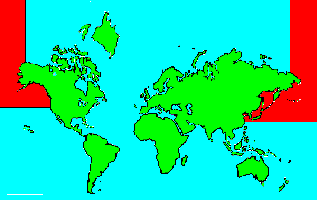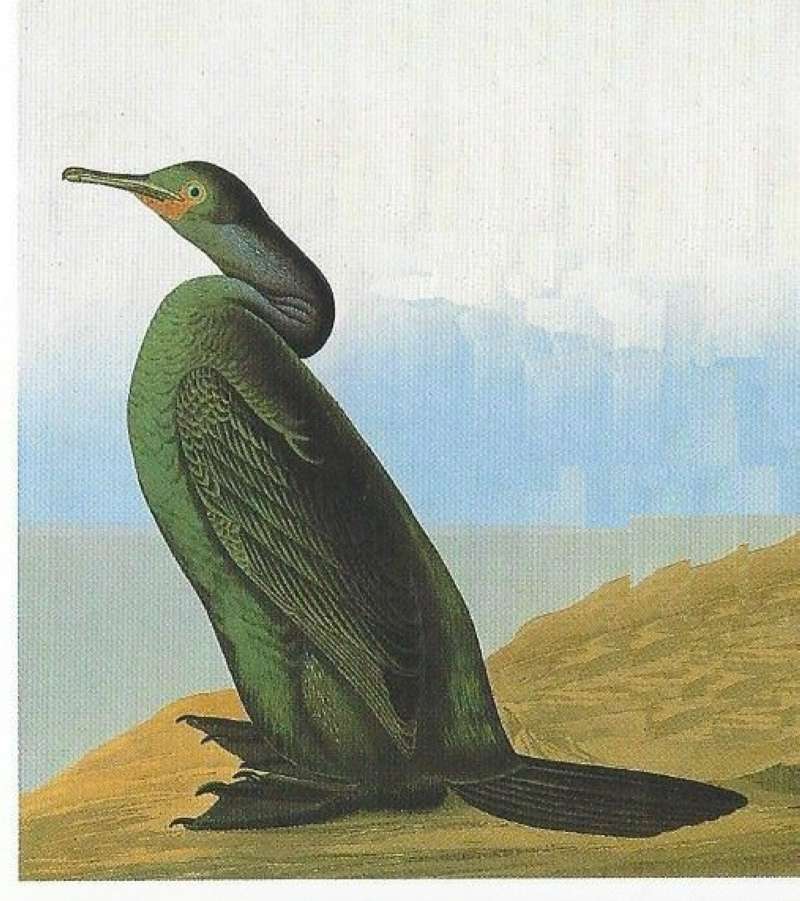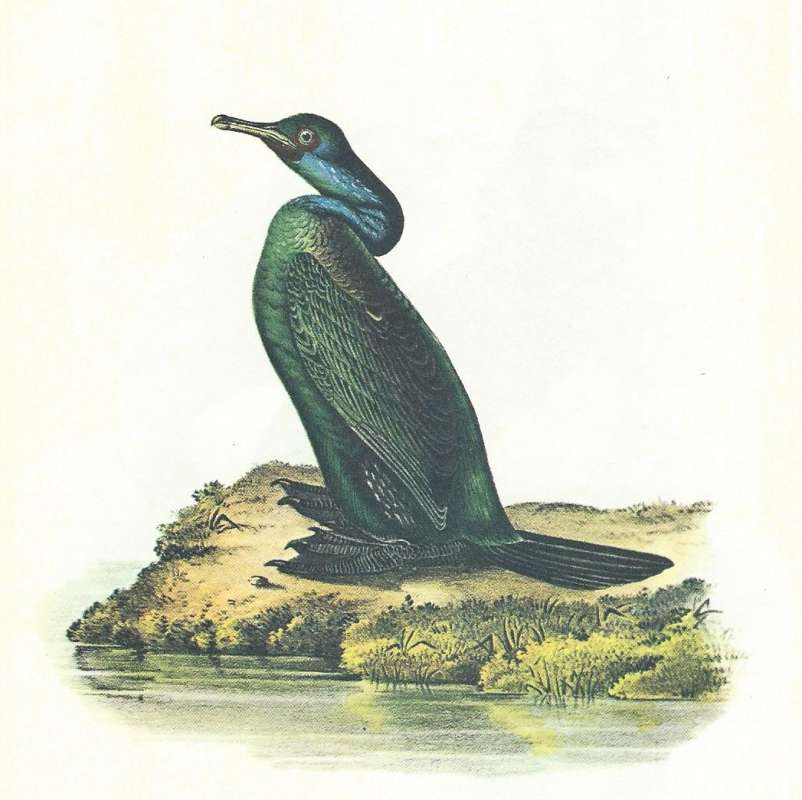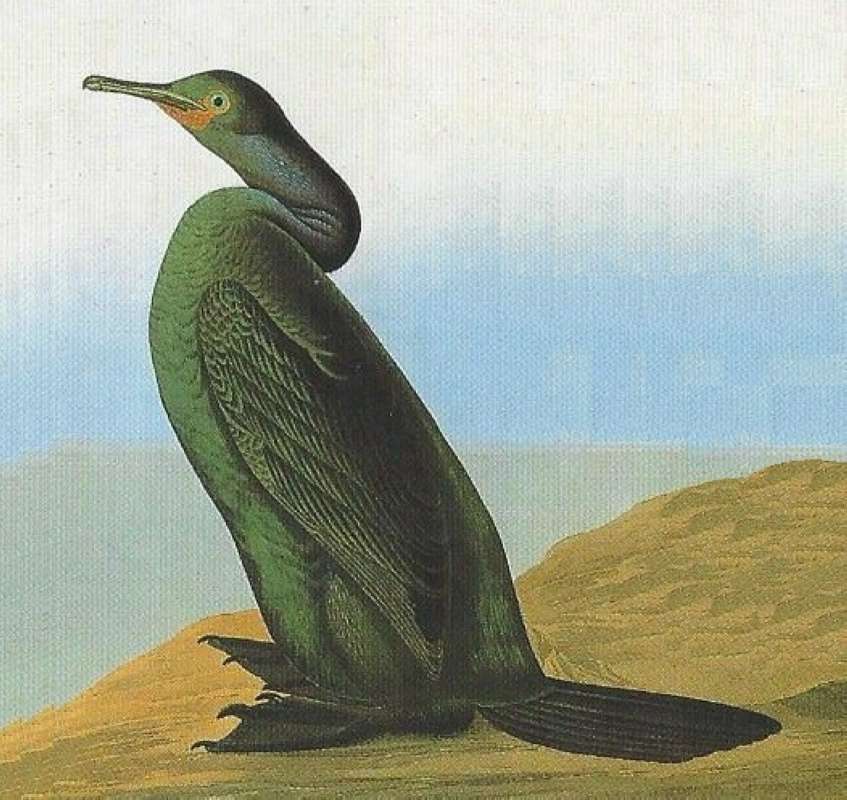SPECIES INFO
Pelagic Cormorant (Phalacrocorax pelagicus) is found in most of the north Pacific Ocean from the Bering Sea to Korea and Japan and south to southern California. This is a somewhat smaller species of cormorant being typically twenty-six to twenty-nine inches in length.
There are two subspecies. The nominate subspecies is found in north eastern Asia, the Bering Sea, and some Arctic Ocean Islands. The subspecies resplendens is found along the coast of western North America from British Columbia south along Washington, Oregon, and California to the Baja.The cormorant and shag genus (Phalacrocorax) is widespread around the world. Monroe showed 37 species in 1993 and Clements showed 39 species in 2007. (Monroe lists Phalacrocorax perspicillatus which is extinct. Clements did not count this species in his list.) These birds are more successful in warm and tropical climates, but can occur in much colder areas.
Cormorants are usually found near ocean shores and near inland freshwater lakes and rivers. These birds vary in size from about 18 to 40 inches in length. These birds can swim with only their head and neck above water. They are capable of diving to 60 to 100 feet. They normally bring their captured fish to the surface before swallowing it.
The King Cormorant (Phalacrocorax antriceps ssp albiventer of the Falkland Islands) can been raised to a species as Phalacrocorax albiventer. However, this is still recognized as a subspecies by Clements, and does not help explain the differences in counts.
Cormorant Family (Phalacrocoracidae) contains thirty species of birds that are found in the coastal waters of the world. Cormorants catch fish by diving from the surface of the water and chasing the fish underwater. An ancient oriental method of fishing is to use trained birds to catch fish.
Pelicans and Allies (Order Pelecaniformes) contains six different families of marine birds. Most are large species and
most feed on fish. One distinguishing feature of this order is the webbing that connects all four toes.
Aves contains about 8,650 different species of living birds known to science. Each year about one new species is discovered in some remote rain forest or remote island. In addition, scientists have been raising many subspecies to full species status which may raise the species count to 10,000. Birdlife recognizes 10,027 species as of 2011.
However, each year about one species goes extinct. The rate of extinction is increasing, and the rate of new discovery is decreasing, so that the number of bird species will soon begin to decline rapidly. Although different taxonomists would organize the birds differently, there are approximately twenty-seven orders of birds. These orders are broken down into about one hundred and fifty-five different families.
Recent research of the genetic structure of some of the shore birds and owls would indicate that the present organization of orders and families should have some modification.
The birds are a worldwide group of animals that are characterized by having the front limbs modified into wings that are used for flying. Perhaps the most unique feature of the birds is the feathers. These feathers are made up of a central support called a quill and a series of small filaments that are hooked together as barbs.
For many years it was believed that Archaeopteryx discovered in Bavaria was the oldest bird from about 150 million years ago. However, in l986, Sankar Chattterjee, a Texas paleontologist, reportedly discovered a bird in the genus Protoavis that lived about 225 million years ago.
When this project was begun in 1978, we used Austin & Singer for bird taxonomy. Since then, we have adopted many changes, but have kept some older concepts that are still found widely in the literature. Recently, we have used Clements and Howard & Moore. Very recently, we have used Monroe and Sibley for the higher taxonomy of the perching birds.
Backboned Animals (Phylum Chordata) are the most advanced group of animals on earth. These animals are characterized by having a spinal cord or backbone. Most members have a clearly defined brain that controls the organism through a spinal cord. Fish, amphibians, reptiles, birds, and mammals are in this phylum.
Currently, some taxonomists believe that the fish should be divided into two groups (sharks and regular fishes) and that there are some other primitive groups in the phylum such as hagfish or lampreys.
Animal Kingdom contains numerous organisms that feed on other animals or plants. Included in the animal kingdom are the lower marine invertebrates such as sponges and corals, the jointed legged animals such as insects and spiders, and the backboned animals such as fish, amphibians, reptiles, birds, and mammals.






